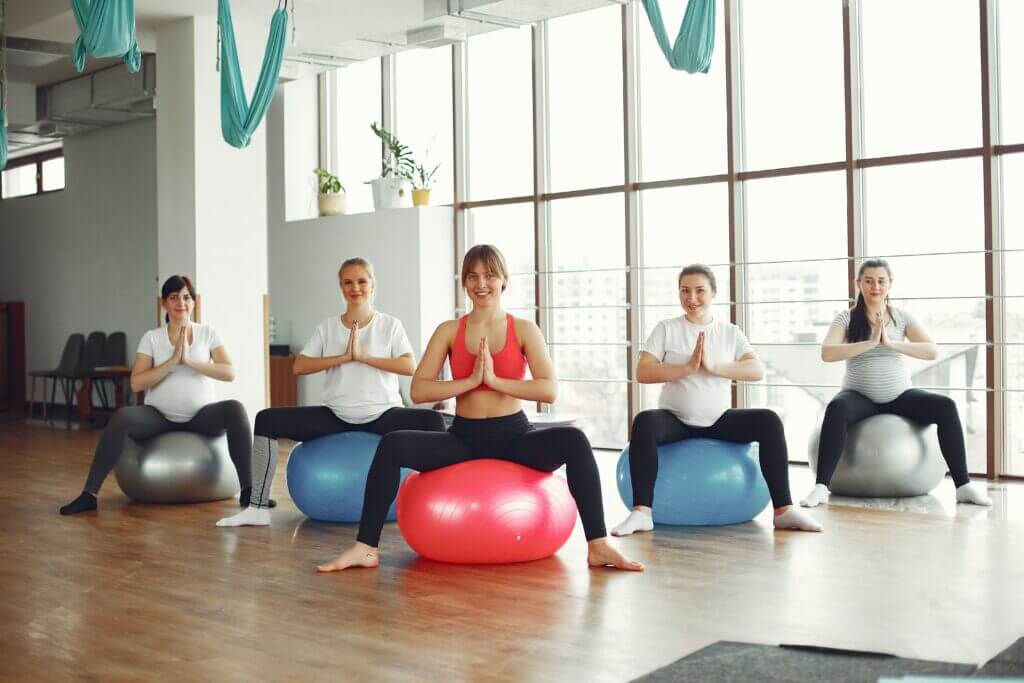If you’re a pregnant woman wondering if it’s safe to exercise during pregnancy, I’m here to tell you that in most cases, it is! Regular exercise during pregnancy can provide numerous benefits for both you and your baby. Some examples of these benefits are,
BENEFITS OF EXERCISING
- Reduces the risk of complications: Regular exercise during pregnancy can reduce the risk of gestational diabetes, preeclampsia, and cesarean delivery.
- Boosts mood and energy: Exercise releases endorphins, which can help improve mood and energy levels during pregnancy.
- Improves sleep: Exercise can help improve sleep quality during pregnancy, which is important for both the mother and baby.
- Prepares for labor and delivery: Exercise can help strengthen the muscles needed for labor and delivery, such as the pelvic floor and abdominal muscles.
- Helps with postpartum recovery: Regular exercise during pregnancy can help with postpartum recovery by improving muscle tone and cardiovascular health.
However, every pregnancy is unique, and it’s important to consult with your healthcare provider before starting or continuing an exercise routine. They can advise you on any medical conditions that may require modifications to your exercise routine or limit exercise altogether.
SAFE EXERCISES
Now, you may be wondering what exercises are safe during pregnancy. Let’s explore some safe examples together!
WALKING
First up, walking. Walking is a low-impact exercise that you can do throughout your pregnancy. It’s a great way to get moving, get some fresh air, and improve your cardiovascular health. So go outdoors, gaze at the trees, go birdwatching, inhale some flowers, walk the dog, run some errands, visit a friend, pick litter (This may be unpleasant, but it does help keep the community clean). Keep walking.
Each time you walk outdoors, you will see something new and possibly exciting. Make it a habit you can enjoy with your spouse and little one when he or she comes along. Your family will definitely form lasting memories and bonds as you exit your home and go on these mini adventures together.

SWIMMING
Another great option is swimming. Swimming is a low-impact exercise that can help support the weight of your growing baby. It can also help relieve back pain and swelling. Besides, who doesn’t like feeling weightless after carrying your belly bump around all day?
Water is calming and the exertion is rewarding. So if you can, grab your swimsuit and jump in the pool. But take precautions. Make sure there’s a lifeguard in sight, or another adult who can swim. Accidents happen sometimes. Wear a safety vest if you don’t have much experience swimming and have a blast in the water.

YOGA
Prenatal yoga is another wonderful way to stay active during pregnancy while also reducing stress and anxiety. Prenatal yoga is a form of yoga that is specifically designed for pregnant women. It’s a gentle and safe way to exercise during pregnancy, and it can provide numerous benefits for both the mother and baby.
One of the primary benefits is stress relief. Pregnancy can be a stressful time, and prenatal yoga can help reduce stress and anxiety. It can also help improve mood, promote relaxation, and reduce symptoms of depression.
Another benefit of prenatal yoga is improved physical fitness. Prenatal yoga poses can help improve flexibility, strength, and balance. These benefits can be especially helpful during pregnancy, as your body is going through significant changes.
Prenatal yoga can also help prepare your body for labor and delivery. Many of the poses and breathing techniques used in prenatal yoga can help strengthen the pelvic floor muscles and prepare your body for the physical demands of labor and delivery. It can also help relieve common pregnancy symptoms, such as back pain, sciatica, and swelling. It can also help improve sleep and reduce insomnia.
Your instructor will guide you through each pose, and they will offer modifications as needed based on your individual needs and stage of pregnancy.
Take note though, it’s important to note that it’s best to attend a class led by a certified prenatal yoga instructor.

OTHER LOW IMPACT AEROBICS
If you’re interested in low-impact aerobics, such as dancing or step aerobics, that can also be a great way to get moving during pregnancy. Just be sure to avoid high-impact movements or exercises that involve jumping or twisting. So whenever you can, put some high tempo music on, remove your shoes and jiggle your way across the room, you don’t have to be perfect, you don’t have to look good, just enjoy yourself, move your arms and legs, dance like nobody’s watching.
You can also join some low impact aerobic classes or follow along with a YouTube tutorial. Don’t overdo it though and make sure you’re having fun.
Strength training can also be beneficial during pregnancy. It can help improve muscle tone and support your joints, which is especially important during pregnancy. However, it’s important to avoid heavy lifting or exercises that strain your abdominal muscles. So lift weights safely and always with someone close-by. Someone who can help when you need it.
If you can, get a physical trainer with experience training pregnant women. Avoid overexertion. Especially if you have had previous complications. Remember, balance is key. A strong mother usually means a strong baby.
KEGELS
Do some Kegels. Kegels are a type of exercise that can help strengthen the pelvic floor muscles. These muscles are located in the pelvis and support the bladder, uterus, and bowel. During pregnancy, the weight of the growing baby can put pressure on these muscles, leading to urinary incontinence or other problems.
Kegel exercises involve contracting and relaxing the pelvic floor muscles. To do a Kegel exercise, you can start by squeezing the muscles that you would use to stop the flow of urine. Hold the contraction for a few seconds, and then release the muscles. You can repeat this contraction and release several times, aiming for at least 10 repetitions per session.
Pelvic floor exercises are safe to do during pregnancy and can provide numerous benefits. These exercises can help improve bladder control, prevent urinary incontinence, and reduce the risk of developing hemorrhoids or other pelvic floor problems. They can also help prepare your body for labor and delivery, as strong pelvic floor muscles can make pushing more effective and reduce the risk of tearing.
It’s important to note that Kegel exercises may not be appropriate for all women, particularly those with certain medical conditions or pelvic floor problems. It’s important to consult with a healthcare provider before starting pelvic floor exercises to ensure they are safe and appropriate for your individual situation.
Remember, it’s important to listen to your body and modify your exercise routine as needed during pregnancy. Avoid exercises that cause pain or discomfort, and be sure to stay hydrated and take breaks as needed.
It’s important to note that not all exercises are safe during pregnancy. Some exercises, such as high-impact activities, contact sports, and exercises that require lying on your back, should be avoided. It’s also important to avoid exercising in extreme heat or at high altitudes.
Overall, exercising during pregnancy can provide numerous benefits for both the mother and baby. However, it’s important to consult with a healthcare provider before starting or continuing an exercise routine and to listen to your body throughout your pregnancy.
CONCLUSION
To summarize, regular exercise during pregnancy can provide numerous benefits for both you and your baby, as long as it’s done safely and under the guidance of your healthcare provider. So, don’t be afraid to get moving and enjoy a healthy and active pregnancy!



Very Educative.thanks
You’re welcome Abigail. We are glad you liked it
How can I share this article?
Please, you can copy the link from your browser when you open the post. We will add a share button soon